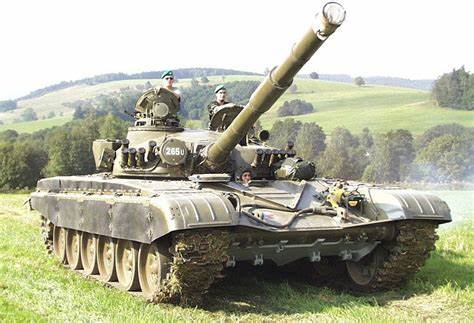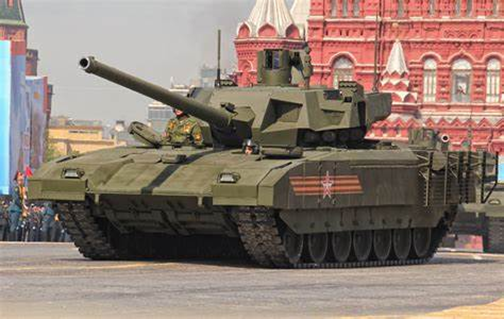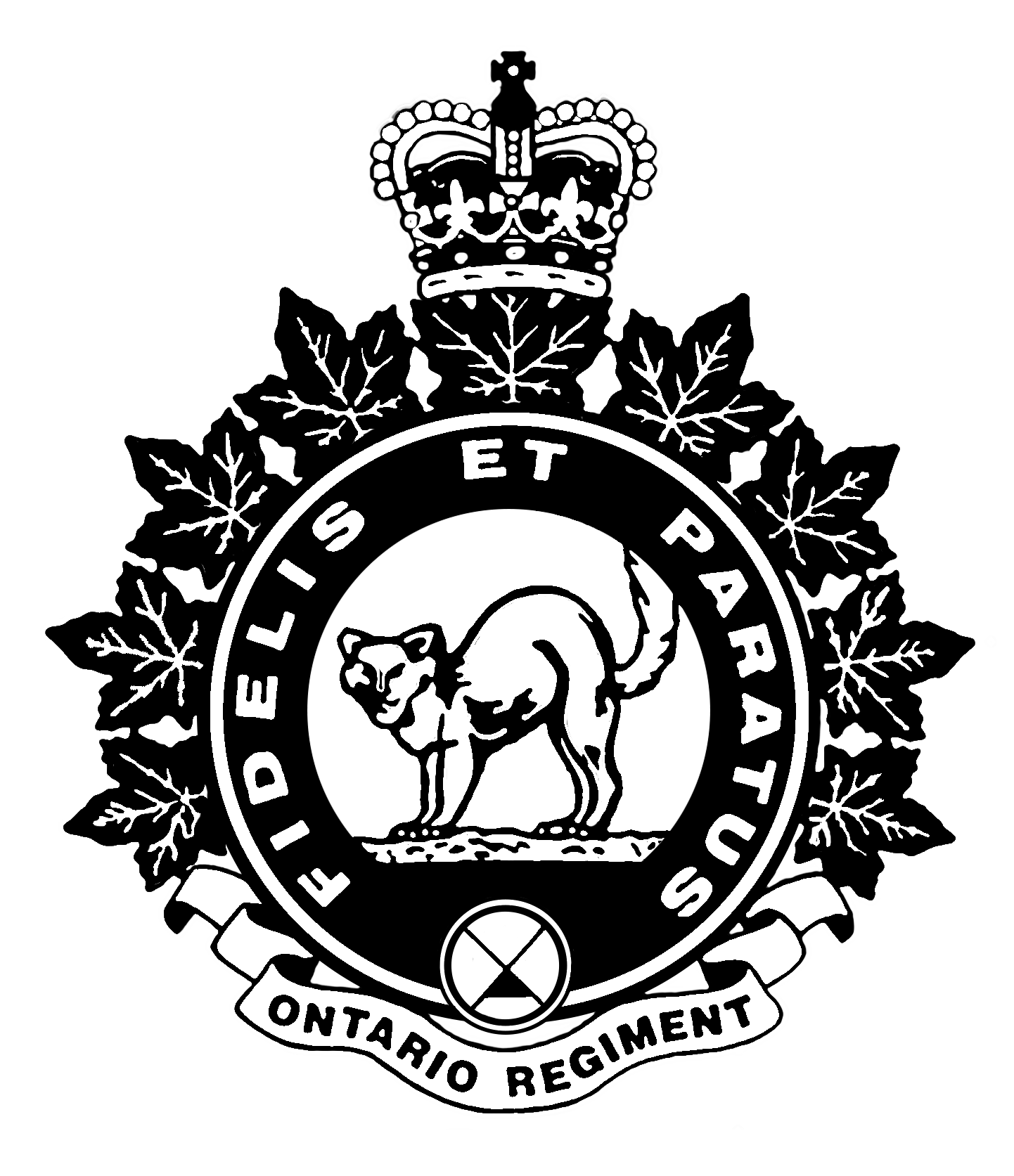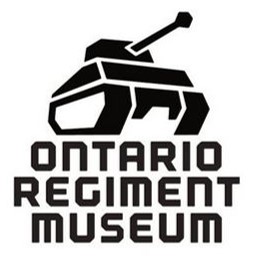(Note: Most of the data in this article are from sources published prior to the current situation in Ukraine.)
The T-72 (and later T-90) and the T-62/T-64 (and later T-90) together represent the Soviet Era army to most people. These tanks were primary power-projections for their army. Estimates of the number of tanks in the Russian inventory vary but for our purposes, we can use the following:
| Entered Service | End of Service | Storage | In use | |
| T-62 | 1961 | 2008 | 2,000 | |
| T-64 | 1966 | 2,000 | ||
| T-72 | 1971 | 8,000 | 2,000 | |
| T-80 | 1976 | 5,000 | 2,000 | |
| T-90 | 1992 | 600 | 350 | |
| T-14 Armata | 2021 | 20 |
The early days
At the beginning of the war, there were two major tanks being used by the Soviet forces – the T-26 and the BT series.
The T-26 was a light infantry tank based on the Vickers Six-Ton export tank. It entered service in 1931. Over 11,000 were built and there were 23 production variants. The T-26 proved superior to Italian and German tanks during the Spanish Civil War. This advantage was lost during the early days of WW2 due to German air, artillery, and tactical superiority and they suffered severe losses. By 1942, the T-26 had been completely replaced by the T-34.
The BT was classified as a light cavalry tank and was based on an early design by American engineer J. Walter Christie. Mass production began in 1932 and approximately 8,000 vehicles were produced with 4 primary variants. When Germany invaded the Soviet Union in June 1941, the Red Army had already decided to replace the BT series of tanks with the T-34.
Much like the Allies’ Shermans and the Germans’ Tigers, the T-34 became the Soviet iconic tank of the time. Initially produced in Russia in 1940, over 84,000 units of two variants were built in Russia, Poland, and then Czechoslovakia. Almost 45,000 of them were destroyed during WW2. Until its successor T-54/55, it was the most-produced tank in history. It was used by the Soviets until the 1960s and exported to over 45 other countries.
In 1943, Soviet designers developed a new tank; the T-44. It replaced the Christie suspension with a Torsion bar and removed the bow gunner. It also incorporated the 85mm main gun. However, the T-34/85 was being manufactured with the same gun. Rather than stopping production to re-tool, the T-44 was relegated to history.
The Cold War and the T-54/55

The T-54/55 series of tanks replaced the T-34 and is the most produced tank in history with over 100,000 built in Russia, Poland, and then Czechoslovakia. They were built until 1983 and used by more than 50 countries.
A Chinese variant (known as Type 59) was first produced in 1959 and 10,000 were built. They served until the early 2000s in the People’s Liberation Army.
The T-62

Well into the 1950s, NATO tanks (Centurion, M48 Patton) had advanced to the point where the T-55’s 100mm gun could not penetrate the frontal armour. Recognizing this (and meeting the Soviet concept of a new tank every 10 years or so…), the Soviet engineers developed a new 115mm smoothbore gun and a new ammunition type – Armour Piercing Fin Stabilized Discarding Sabot (APFSDS). However, this gun was too big for the T-55 turret and the T-55 hull could not take a bigger turret.
The T-62 at first glance looks very similar to it T-54/55 predecessor. The differences can be narrowed down to: slightly longer and wider hull, different road wheels, different road wheel configuration, larger gun with a fume extractor mid barrel, and thicker armour. It does initially use the same engine.
The T-62 does have some interesting features (or issues).
- Was developed before the concept of ergonomics. The lack of comfort drastically affects crew efficiency after a short time in the tank,
- Can produce a smoke screen by injecting diesel into the exhaust system,
- Cannot traverse the turret or fire the main gun with the driver’s hatch open,
- The empty shells are automatically ejected from the turret through a small hatch in the roof of the turret. However, if the alignment between the automatic ejector and the hatch is off in any way, the empty (and very hot) case bounces around the turret causing burns and injuries (also it releases Carbon Monoxide into the turret which is poisonous),
- The Commander can override the gunner’s turret traverse but cannot fire or elevate the main gun,
- Maximum rate of fire is only 8 rounds per minute (compared with 10 rounds per minute for NATO tanks),
- The loader is responsible for the DshK AA MG. Unfortunately, this means that when the AA gun is being fired, the main gun cannot be loaded,
- The T-62 is double the cost of the T-55. In 1968, a new High Velocity Armour Piercing round was developed for the T-55 and this round was almost as effective as the T-62’s APFSDS round, and
- The T-62 could not keep up with the BMP-1s.
Long term, the T-62 was not viable for Soviet use and was never popular with the export market.
The T-62 entered Soviet service in 1961. The T-54/55 series and the T-62, compromised over 85% of the tanks in the Soviet inventory. There are number of variants:
- T-62K – Commander’s variant with extra radios
- T-62D (1983) – “Thursh” Active Protection System, applique armor on glacis, upgraded engine
- T-62M (1983) – Modernized. Upgrades to FCS, ballistic computer, radios, sights, stabilizer, and engine. Added armour, side skirts, and smoke grenade launchers. Added ability to fire ATGM from gun.
The T-64

The T-64 was a more technologically advanced version of the T-62. Doctrinally, the T-62 was deployed into the motorized rifle divisions and the T-64 served in the tank divisions. It had a number of advanced features when it entered service in 1966, including:
- 125mm smoothbore gun (T-64A)
- Autoloader
- Composite armour
- Smaller and more powerful engine
The new technology caused the price of the T-64 to grow drastically even more than the T-62. In all approximately 13,000 were built. The T-64 was only deployed to Russia, Belarus, Uzbekistan, East Germany, Hungary and Ukraine. It never made it to the export market.
- T-64A – “Gill” Armour. Infantry hand rails removed (finally). Smoke grenades added. Improved sights for gunner and commander. Improvements to engine and running gear.
- T-64LRF – Replaced coincidence rangefinder with laser rangefinder, night vision for driver and commander
- T-64K, T-64AK – Commander’s variant with extra radios and antennas. AA gun is removed.
- T-64AM (1983) – Modernized. New Cast turret with ceramic composite armour. Upgraded engine.
- T-64B/B1 (1976) – Many improvements to the Fire control including cross wind sensor, upgraded computer, laser integrated into gunner’s sight. The ability to fire an ATGM was in the B but not the B1 variant (for cost reasons). The B carries 8 Missiles and 28 shells versus the B1 carrying just 37 rounds.
- T-64BM2, T-64U (1999) – These are modernized versions produced in Ukraine and are the most common tank used by the Ukrainian Army. There are upgrades to modern FCS, new loader and the upgraded ATGM. Also, Explosive Reactive Armour is standard.
- T-64BM2, T-64BV (2008) – Further Ukrainian upgrades to the FCS. Thermal optics are added. Improvements are made to the engine (1000hp) and ERA. Battlefield information computer is added along with digital radios.
The T-72

The initial design of the T-72 was a mobilization only product only to be built in times of war. However in 1971, continued problems (including cost) with the T-62/64 designs caused the T-72 to go into production and enter service in 1974. The T-72 series was far more successful that the T-62 with over 25,000 being built and exported to or in service with more than 40 countries. The T-72 series also implemented a number of improvements and modernizations over the next several decades.
The basic design philosophy of the T-72 was to be less expensive and more reliable than the T-62 even if some sacrifice of capability was required. Where possible, proven design components are reused. Minimal improvements to existing components are utilized where necessary and new components designed from scratch as a last resort.
The T-72 family has two distinct lines. The T-72, T-72A, T-72B were all built for the Soviet Army. Export versions (T-72M, T-72M1, and T-72S) have less capabilities and armour than the Soviet tanks.
The T-72 has a large 125mm gun able to fire an array of munitions, including both APFSDS and ATGM. It is fed by an autoloader. The difference between the autoloader in the T-72 versus the T-64 is that the T-64 stores the ammunition vertically and the T-72 stores it horizontally. In both cases, the ammunition is two part – Munition and Propellent in two different trays. The T-72 is also very cramped requiring it crews to be shorter than 1.6m (5ft 4inches).
The domestic version of the T-72 has laminated armour. This protection is removed in the export versions. They have just a cast turret. Many modernized versions of the T-72 incorporate Explosive Reactive Armour (ERA).
- Same Gun as the T-64
- Heavier than the T-64 (41 Tonnes versus 38 Tonnes)
- More powerful than the T-64 (780hp versus 700hp)
- Faster than the T-64 (60km/h versus 45km/h)
Common T-72 Variants
- T-72A (1979) – Replaced Optical Rangefinder with Laser rangefinder with electronic Armour. Applique Turret composite armour (“Dolly Parton” nickname), and “Gill” Armour” Provisions for ERA and smoke grenade launchers.
- T-72B (1985) – New main gun, improved stabilizer, sights, and fire control system. Engine improved to 840hp.
- T-72B3 (2011) – Upgraded Gunner’s sight. Standardized ERA, new gun with new ammunition types. Digital radios. Better autoloader.
- T-72B3M (2016) – Vastly improved electronic suite. Automatic transmission. Digital displays. Engine upgrade to 850hp.
- T72M/M1 – Export version built in either Czechoslovakia or Poland. Composite armour is not added. Inferior sights and fire control system. Inferior Ammunition. M1 version has extra glacis plate added.
The T-72 has like many tank designs before it been the basis for other vehicles:
- MTU-72 (1974) – Armoured Bridge Layer. Can deploy a 20m X 3m bridge in about 3 minutes.
- IMR-2 Combat Engineer Vehicle. Has crane, dozer blade, and mine clearing system. Upgraded to IMR-2M1 in 1987 and IMR-2m2 in 1990
- BREM-1 – Armoured Recovery vehicle with Crane and Winch.
- TOS-1 (1988) – 24 barreled unguided Multiple Rocket Launcher System. Can fire both incendiary and thermobaric rockets to a distance of 10km. There is also a companion vehicle carrying reloads and a crane called the TZM and built on a 6X6 cross country heavy truck.
- BMPT “Terminator” (2018) – Urban tank and convoy support vehicle. T-72 hull with a different turret that holds 4 missile launchers, 2 30mm auto cannons, 2 grenade launchers, and a 7.62 machine gun.
The T-80

The T-80 can be considered an upgrade to the T-64 and incorporating lessons from the T-72. It entered service in 1976 and was the first Russian tank (and second in the world) to utilize a gas turbine engine which caused reliability and logistic issues – it uses a lot of gas…)
- T-80 has a gas turbine engine (1,000 hp multifuel) which can reach speeds of 80km/h
- Same gun/missile system as T-64.
- Same auto loader as T-64 holding 28 rounds of 2 part ammunition (Projectile is separate from the propellent).
- Same turret as the T-64A with coincidence rangefinder.
One major drawback to the T-80 was that during the 1980s, the Soviet Union fielded T-62s, T-64s, T-72s and T-80s. This resulted in major complexities for training and supply as these tanks could not share supply logistics and cross training was difficult.
The tank picked up a bad reputation during the First Chechen War (1994 – 1996). As such the T-80 did not see any action until 2022.
- T-80B (1978) – New Turret with laser rangefinder, autoloader and fire control system. Explosive Reactive Armour(1980), New gun (1982)
- T-80BV (1985) – standard use of ERA (Kontakt-1)
- T-80U (1987) – Large improvement. 1,250 hp turbine engine. Advance Fire control system, upgraded and standardized Kontakt-5 ERA integrated into the design.
- T-80UD – Ukrainian upgrade that replaces the gas turbine with a diesel engine. A more popular export than the Russian version.
The T-90

The T-90 project grew out of a Russian desire to field a single tank type to replace the T-62/64s, T-72s, and T-80s (and simplify their logistics). The T-72 was chosen due to its price and ease of use. The T-90 entered service in 1992.
- Same Gun system as the T-80.
- Similar autoloader to T-72.
- Engine is a turbocharged 1,000 hp V-12 Diesel (later upgraded to 1,250 hp)
- First Russian tank with air conditioning
- Three layers of protection:
- Composite Armour,
- Built in Explosive Reactive Armour (Kontakt-5),
- Passive protection suite “Shora” (IR Jammer, 4 laser warning receivers that can launch “smoke” in event that the tank is targeted by a laser guidance system)
The T-90 is considered a world class tank but is 30 years old based on a design that is 50 years old. It has been exported to over seven countries and India builds their own licensed version.
- T-90K (1994) – Command variant with extra radios.
- T-90S,T-90SK (2004) – “Export” version Adds Thermal Vision. May lack the Passive Protection Suite
- T-90A, T-90AK (2005) – Minor upgrades to original T-90. Added Thermal Vision.
- T-90M, T-90AM, T-90MS (2017) – Upgrade to the T-90, T-90A and T-90S. ERA improved from Kontakt-5 to Relikt. Cage armour added to turret. Remote weapons station added. New main gun with better range and accuracy. Hunter-Killer system as part of Fire Control System.
- T-90MS (2020) – Improved engine, air conditioning, electronics, and armour.
The T-90 also has bridge layer, recovery, engineer, and mine clearing variants.
The T-14 Armata

In 1988, a new tank design concept was introduced in Russia. Lack of funding stalled the project until 2001. In 2008, the Russian army decided that they would no longer modernize the T62/64/72 families but introduce a modern design “next generation” tank starting in 2010. However by May of 2010, the Russian government had withdrawn all funding. There are rumors of a prototype being created but it has never been seen or documented. This was informally known as the T-95 project.
Originally, the Russian government planned to purchase 2,300 T-14s staring in 2015. The mass production was delayed due to the high cost of the tank but was expected to being in 2021. Plans were made to start production in 2022 but that did not happen. An “experimental batch” of 20 tanks were built and made their debut at the 2015 Moscow Victory Day Parade (9 May 2015), where one proceeded to break down, could not be towed, and finally restarted on its own.
T-14 development diverges from traditional Russian tank development. It is revolutionary rather than evolutionary. The crew of three sits side-by-side in the front of the tanks. A large unmanned turret mounting a 125mm smoothbore gun (future plan is to be replaced by a 152mm gun), autoloader with 45 rounds (and the potential to fire ATGMs), active protection system (hard and soft kill), climate sensors, and millimeter radar. The 1500hp diesel engine can power the 48 ton tank up to a top road speed of 82 km/h. The system was also to be the basis for the tank, Armoured Personnel Carrier, Infantry Fighting Vehicle and other variants.
For protection, the tank utilizes armour based on a composite base covered in a single layer (not bricks) of ERA. Additional armour is added to the front two thirds of the tank with some slat armour on the rear. The Active protection system uses four millimeter radar panels on all sides of the turret. The soft kill feature is used to spoof the guidance and tracking systems of incoming ATGMs while the hard kill component would actively destroy the incoming ordinance.
The commander and gunner have both normal and thermal sights along with laser rangefinders. The commander’s sight is located on the top of the turret and has 360 field of vision. The gunner’s sight is slaved to the gun. The crew also has closed circuit TV capability by cameras around the hull.
There have been no exports of the T-14 and deliveries to the Russian army have been plagued by delays, rising costs, manufacturing issues, and poor quality. One major problem is that some of the electronic components are imported from European sources – which are unobtainable with the current sanctions. Reports are that the mass production has stalled again. The tank has not seen combat in Ukraine and it not expected to due to expense, potential embarrassment, and lack of integration into the logistics and maintenance chains.


